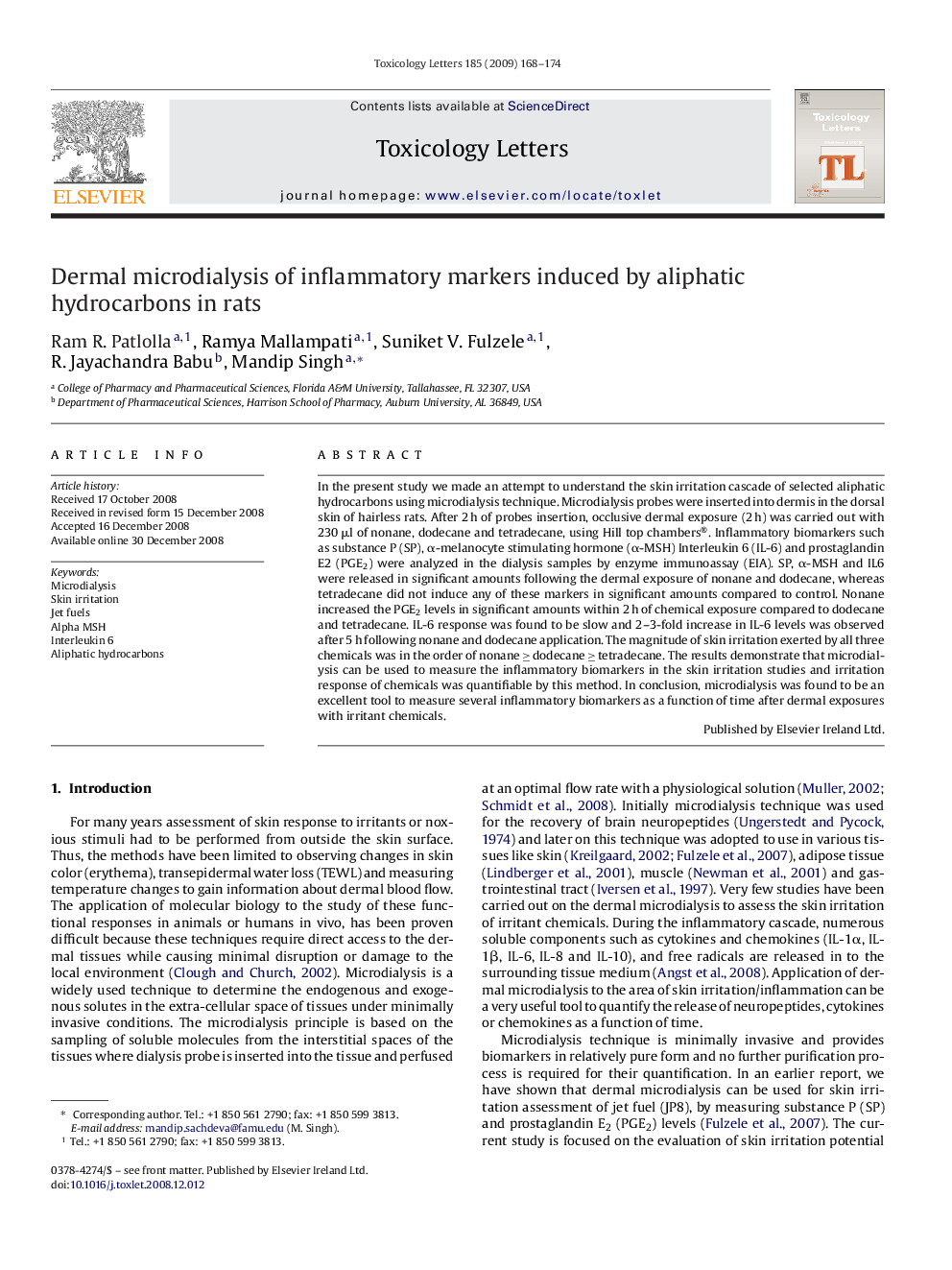| Article ID | Journal | Published Year | Pages | File Type |
|---|---|---|---|---|
| 2601082 | Toxicology Letters | 2009 | 7 Pages |
In the present study we made an attempt to understand the skin irritation cascade of selected aliphatic hydrocarbons using microdialysis technique. Microdialysis probes were inserted into dermis in the dorsal skin of hairless rats. After 2 h of probes insertion, occlusive dermal exposure (2 h) was carried out with 230 μl of nonane, dodecane and tetradecane, using Hill top chambers®. Inflammatory biomarkers such as substance P (SP), α-melanocyte stimulating hormone (α-MSH) Interleukin 6 (IL-6) and prostaglandin E2 (PGE2) were analyzed in the dialysis samples by enzyme immunoassay (EIA). SP, α-MSH and IL6 were released in significant amounts following the dermal exposure of nonane and dodecane, whereas tetradecane did not induce any of these markers in significant amounts compared to control. Nonane increased the PGE2 levels in significant amounts within 2 h of chemical exposure compared to dodecane and tetradecane. IL-6 response was found to be slow and 2–3-fold increase in IL-6 levels was observed after 5 h following nonane and dodecane application. The magnitude of skin irritation exerted by all three chemicals was in the order of nonane ≥ dodecane ≥ tetradecane. The results demonstrate that microdialysis can be used to measure the inflammatory biomarkers in the skin irritation studies and irritation response of chemicals was quantifiable by this method. In conclusion, microdialysis was found to be an excellent tool to measure several inflammatory biomarkers as a function of time after dermal exposures with irritant chemicals.
